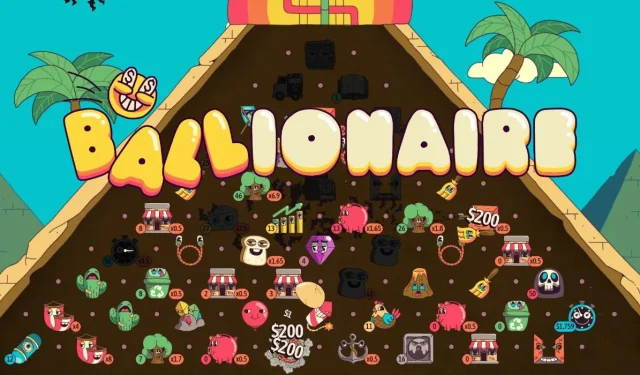
Engage with Ballionaire, a captivating new indie game from developer newobject and publisher Raw Fury, where the simple premise of pressing a button and dropping a ball leads to exhilarating gameplay. This innovative title merges the deckbuilder and autobattler genres with a physics-heavy gameplay mechanic, offering players a rich experience filled with dynamic interactions and impressive scoring possibilities. While some design and interface issues exist, players who revel in game-breaking strategies and creative builds will likely find Ballionaire to be an exciting pursuit.
Fans of Japan’s beloved pachinko machines, the iconic Plinko from The Price Is Right, and the 2016 game show The Wall will feel right at home with the core mechanics of Ballionaire. Here, a ball cascades down a board dotted with pins, ultimately falling into an abyss. Unlike typical pachinko games, Ballionaire emphasizes one key ball drop per turn, allowing for a gameplay experience that intertwines luck with strategic decision-making. Players will draw three “triggers” and “boons,” akin to “cards” and “artifacts” in other roguelite deckbuilder games, to boost their scoring capabilities.
While Ballionaire lacks the precision of shots found in PopCap’s classic Peggle or its roguelike successor Peglin, it strongly prioritizes board manipulation and the strategic combination of selected triggers and reactive surfaces. This nuanced construction approach evokes comparisons to notable deckbuilders like Monster Train, even if Ballionaire does not quite reach the same level of polish.
Understanding Ballionaire Board Design
Create Your High-Score Machine
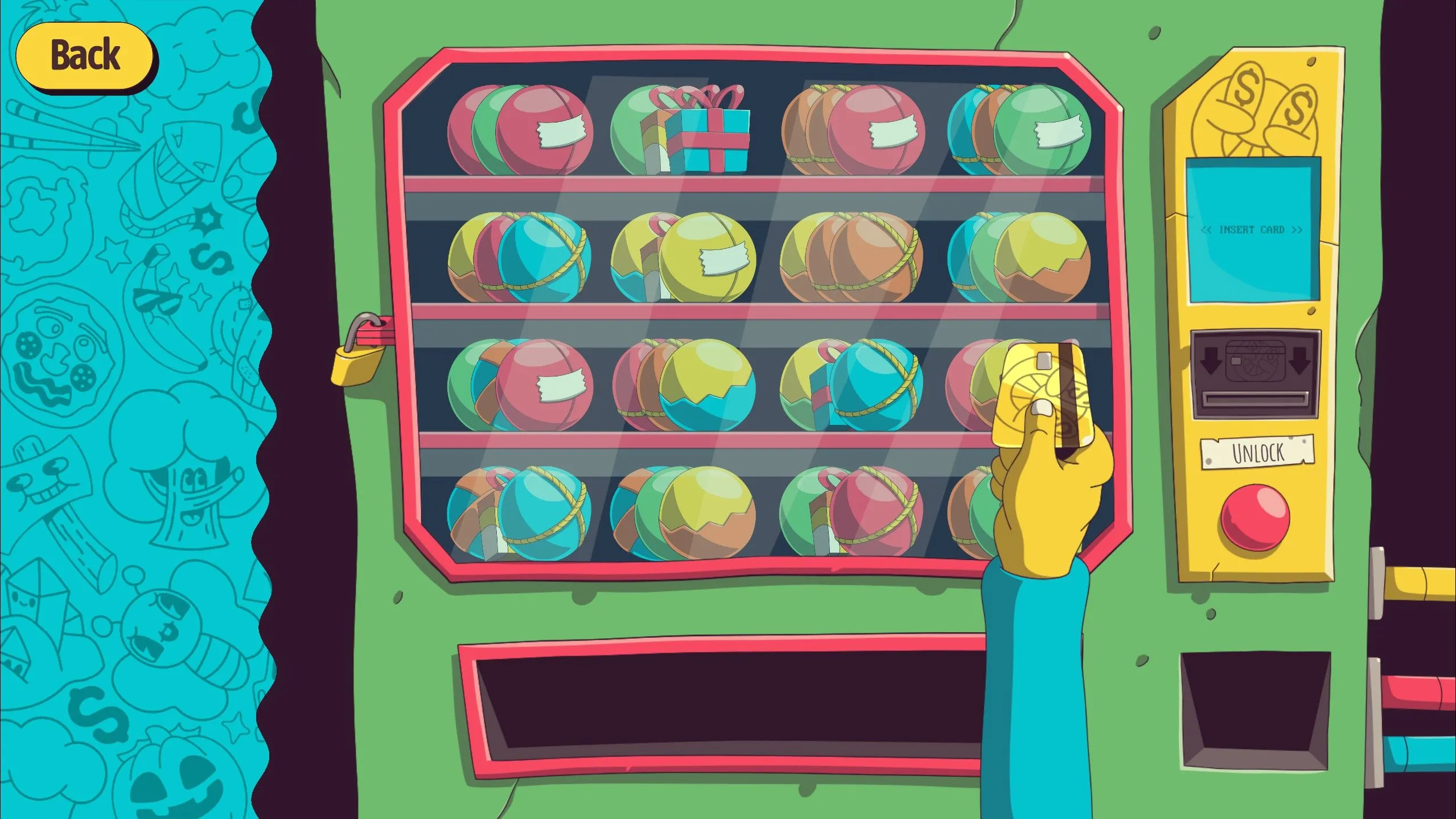
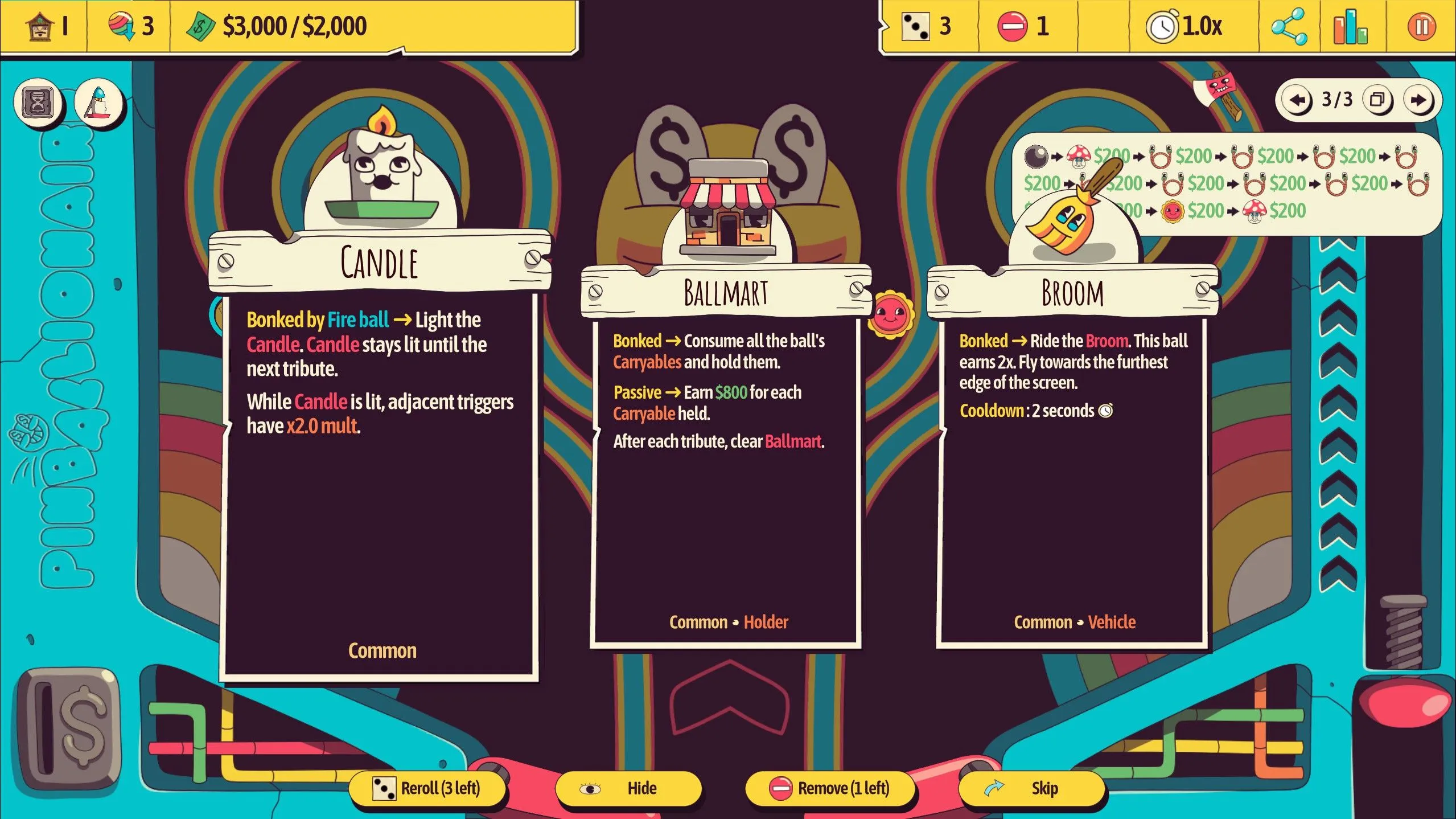
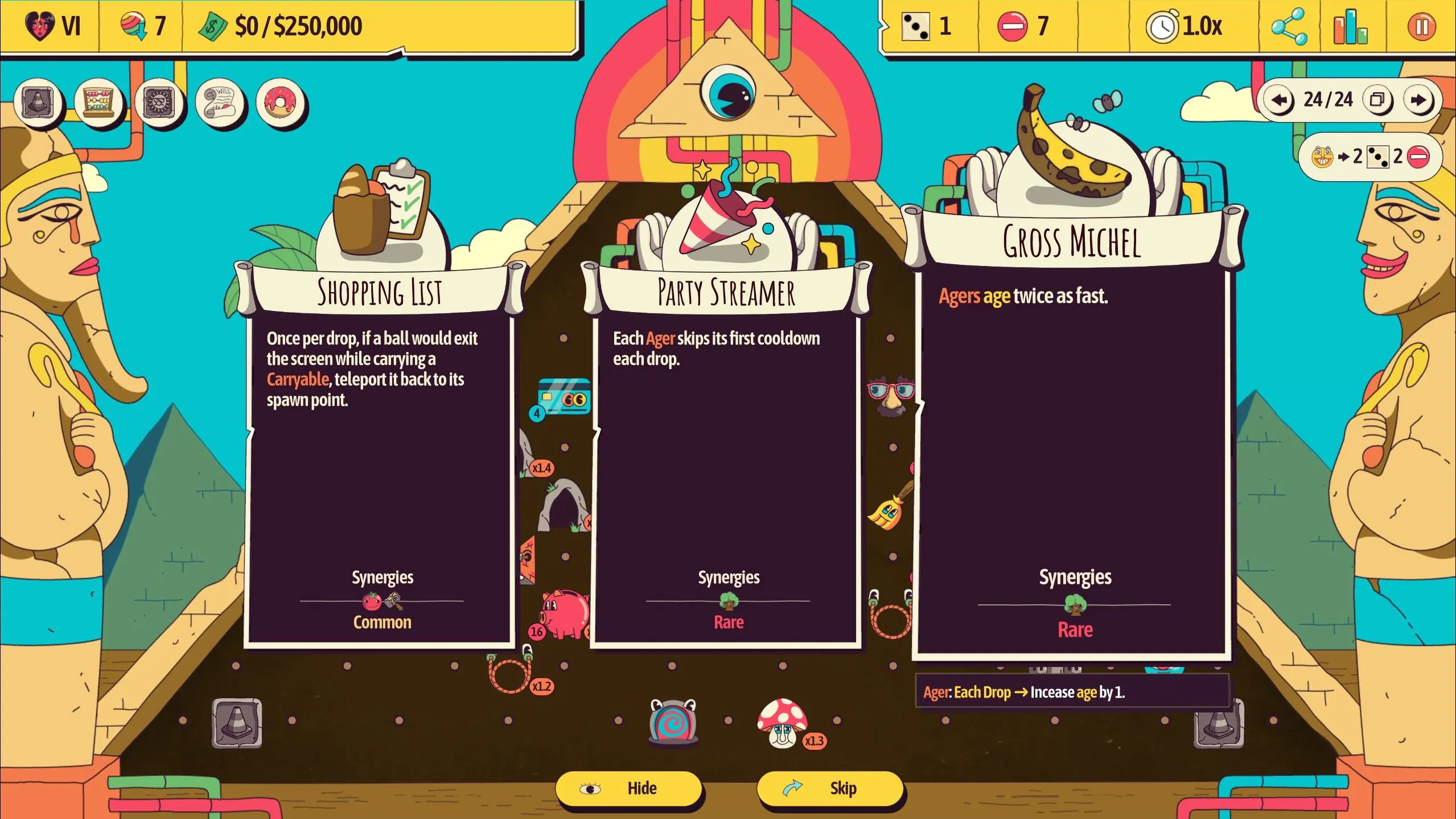

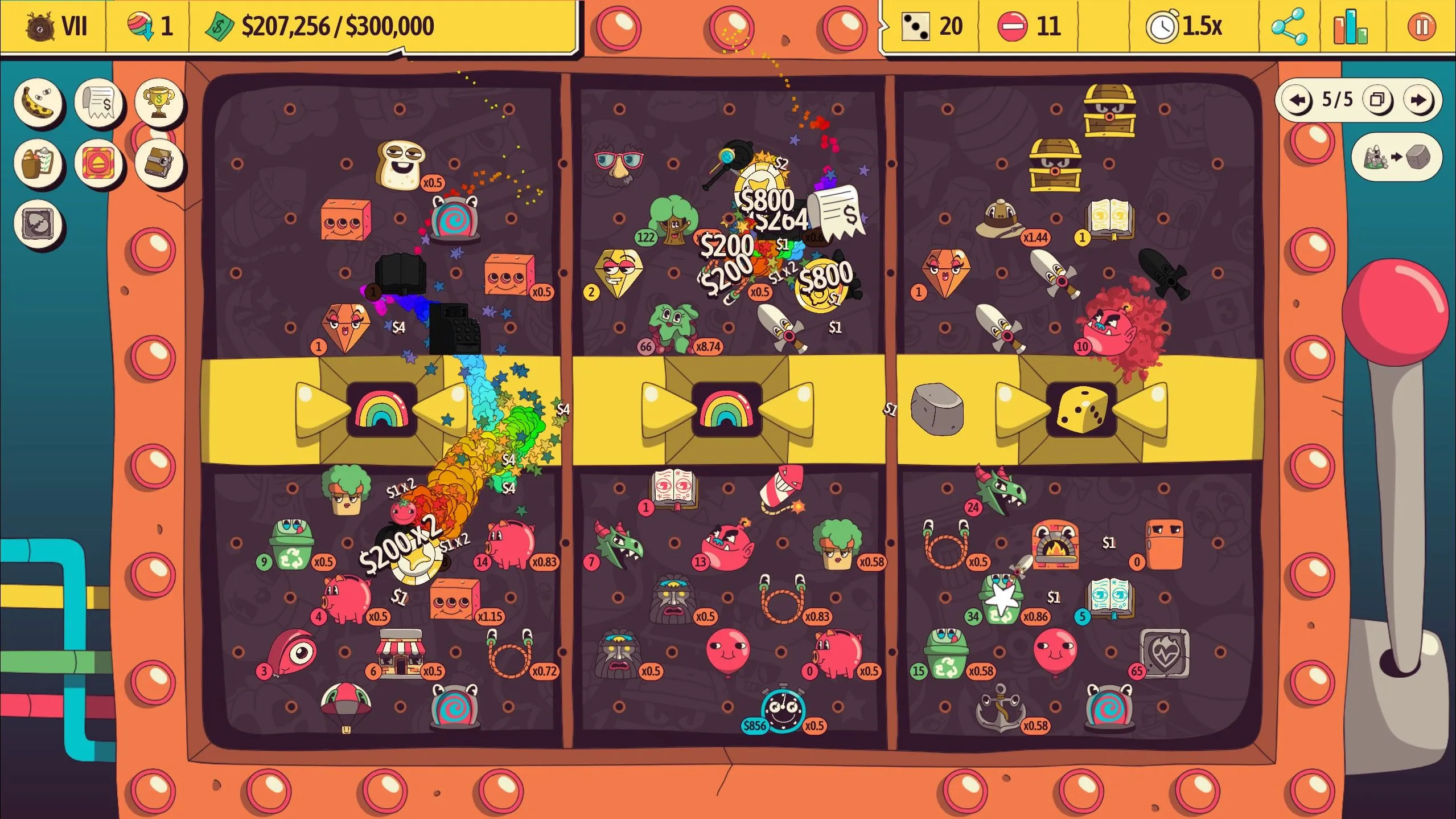
Players start on the “Pyramid”board, where an animated Eye of Providence follows the cursor. However, every click sends the ball down at a random angle, potentially leading to a lackluster experience during initial turns. The early rounds can feel unproductive, reminiscent of early stages in decks from other games.
As players continue, each lost ball rewards them with a draft of emerging triggers, movers, or holders. With seven available drops in a round, the board will evolve into an intricate web of scoring potential, demanding progressively higher totals to advance. Balls can exhibit a range of behaviors including bouncing, splitting, teleporting, or equipping items, which opens the door to a multitude of interactions and score multipliers.
Diverse Deckbuilding Experiences
Experiment Across Levels, Modes, and the Laballatory
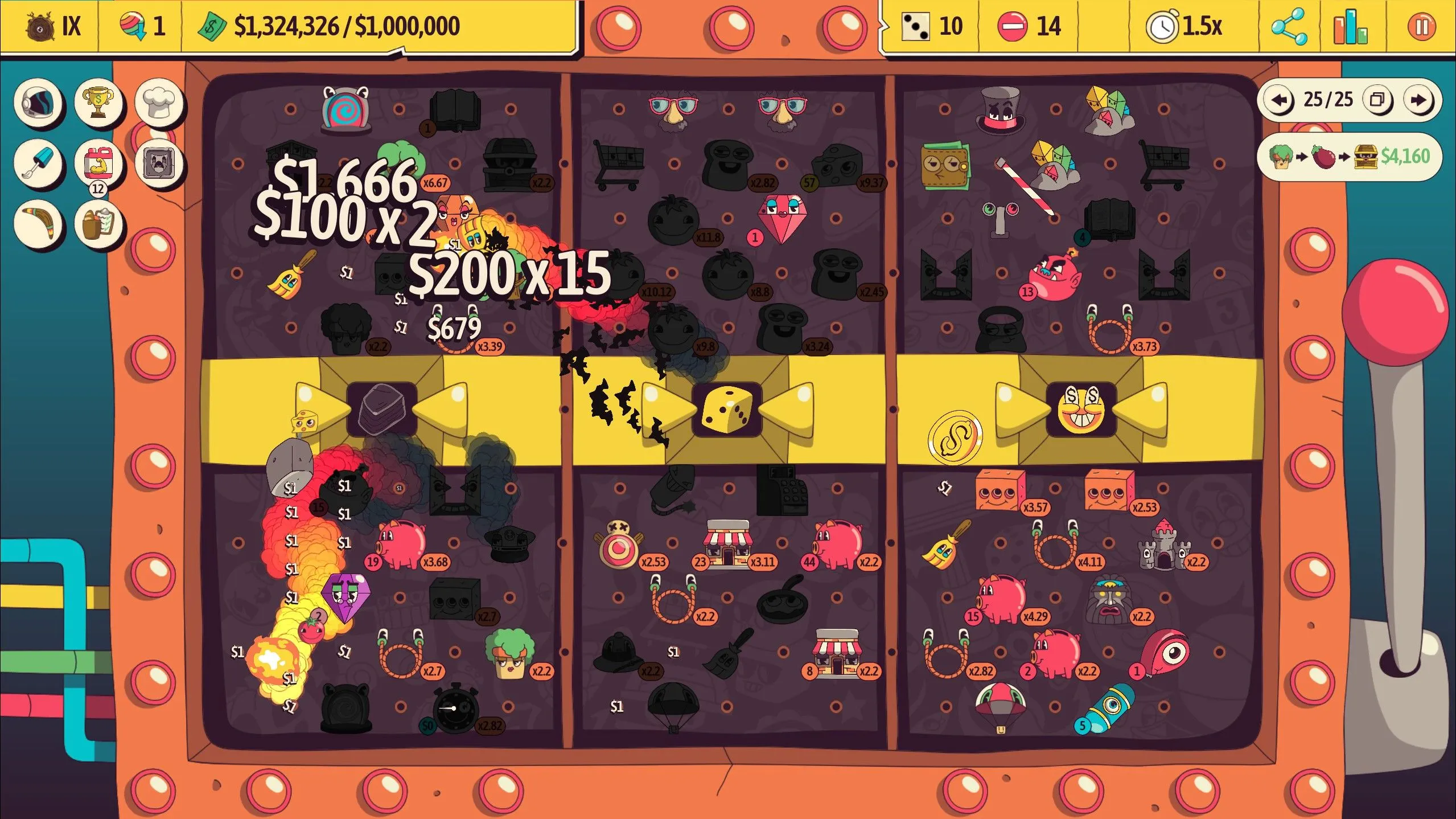
The Pyramid remains the most straightforward board, while the additional four boards introduce quirky mechanics that may seem gimmicky. These variations include a Ferris wheel, a moving boat that retrieves the ball, pinball mechanics with limited flipper pulls in the Pinballionaire board, and a slot machine board with a three-reel system.
Players can invest currency to unlock new drafts throughout their runs, explore snapshots of previous gameplay, and share their board creations within the “Laballoratory.”With a pool of over 125 triggers and 50 boons, the breadth of interactions transforms this mode into an engaging sandbox environment.
After fully unlocking the triggers and boons—an endeavor that took around 12 hours—I found myself eager to continue exploring Ballionaire. The game currently features 16 achievements at launch.
Though Ballionaire presents a vibrant animated aesthetic, some visual elements may come across as confusing. For instance, why a jump rope spins when struck instead of functioning like a trampoline remains unclear, and the thematic coherence may feel lacking.
Embracing Structured Chaos
Beyond Luck: Strategic Depth
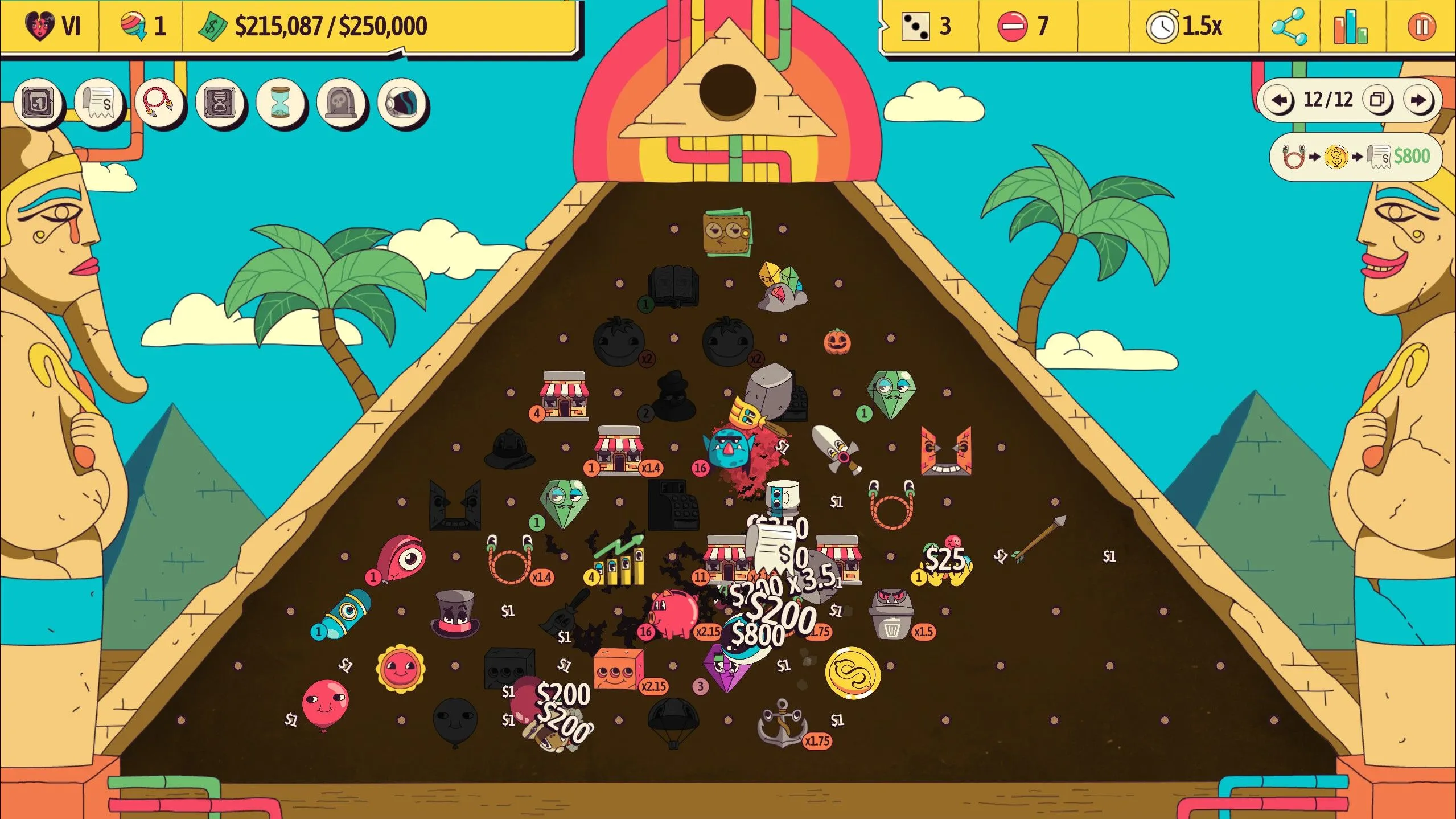
While some triggers benefit from better explanations, the in-game “Ballipedia” is somewhat awkwardly located in the options menu and often fails to provide clarity. Furthermore, certain physics behaviors, like erratic fishing lines or flinging pinballs, detract from the gameplay experience. One of the boards is even susceptible to freezing, leading to error prompts that suggest returning to the title screen, which is hardly ideal.
The draft availability warrants adjustments, as I encountered some items that seemed disproportionately hard to acquire, despite their rarity. While luck plays a critical role in Ballionaire, the predictability of item pulls raises questions about the fairness of the system.
Despite its quirky and vibrant presentation, Ballionaire’s aesthetic choices don’t always pay off. The abstract, cultish visuals lack development, leading to a missed opportunity for deeper engagement.
Concluding Thoughts and Rating
Screen Rant Awards Ballionaire a 7/10 Rating
In summary, Ballionaire is a uniquely unpredictable roguelite that encourages creative theorycrafting within its Laballatory. Once players discern the hidden mechanics that govern the game’s randomness, they will find themselves immersed in a chaotic yet compelling experience, perfect for quick gaming sessions.
However, certain elements evoke the impression of an early-access product, such as the limited selection of boards and modes awaiting future updates or mods. The combat mechanics, while entertaining, feel underutilized due to their limited range of items, hindering variety in combat-oriented builds.
Nevertheless, the enjoyment of crafting scoring machines will appeal to many players, and the hybrid nature of Ballionaire ensures there’s something for every roguelite enthusiast. Even failed attempts often yield valuable lessons or unexpected synergies, making each gaming session feel worthwhile.
A digital code was generously provided to
Screen Rant
for the purpose of this review.




Leave a Reply ▼